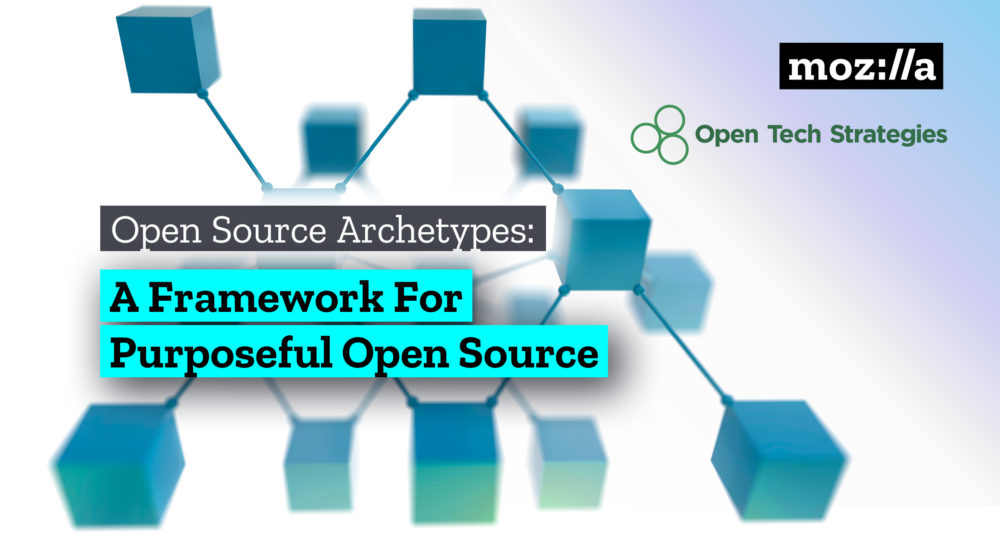A research report from Mozilla and Open Tech Strategies provides new perspectives on framing open source strategy. The report builds on Mozilla’s “Open by Design” strategy, which aims to increase the intent and impact of collaborative technology projects.
Mozilla is a radically open and participatory project. As part of the research we compiled into turning openness into a consistent competitive advantage, we identified that the application of open practices should always be paired with well-researched strategic intent. Without clarity of purpose, organizations will not (and nor should they) maintain long-term commitment to working with community. Indeed, we were not the first to observe this.
Mozilla benefits from many open practices, but open sourcing software is the foundation on which we build. Open source takes many forms at Mozilla. We enjoy a great diversity among the community structures of different Mozilla-driven open source projects, from Rust to Coral to Firefox (there are actually multiple distinct Firefox communities) and to others.
The basic freedoms offered by Mozilla’s open source projects — the famous “Four Freedoms” originally defined by the FSF — are unambiguous. But they only define the rights conveyed by the software’s license. People often have expectations that go well beyond that strict definition: expectations about development models, business models, community structure, even tool chains. It is even not uncommon for open source projects to be criticised for failing to comply with those unspoken expectations.
We recognize that there is no one true model. As Mozilla evolves more and more into a multi-product organization, there will be different models that suit different products and different environments. Structure, governance, and licensing policies should all be explicit choices based on the strategic goals of an open source project. A challenge for any organization is how to articulate these choices, or to put it simply, how do you answer the question, “what kind of open source project is this?”.
To answer the question, we wanted to develop a set of basic models — “archetypes” — that projects could aim for, modifying them as needed, but providing a shared vocabulary for discussing how to think about any given project. We were delighted to be able to partner with one of the leading authorities in open source, Open Tech Strategies, in defining these archetypes. Their depth of knowledge and fresh perspective has created something we believe offers unique value.
The resulting framework consists of 10 common archetypes, covering things from business objectives to licensing, community standards, component coupling and project governance. It also contains some practical advice on how to use the framework and on how to set up your project.
20 years after the Open Source Initiative was founded, open source is widespread (and has inspired methods of peer production beyond the realm of software). Although this report was tailored to advance open source strategies and project design within Mozilla, and with the organizations and communities we work with, we also believe that this challenge is not unique to us. We suspect there will be many other organizations, both commercial and non-commercial, who will benefit from the model.
You can download the report here. Like so many things, it will never be “done”. After more hands-on-use with Mozilla projects, we intend to work with Open Tech Strategies on a version that expands its sights beyond Mozilla’s borders.
If you’re interested in collaborating, you can get in touch here: archetypes@opentechstrategies.com. The Github repository is up at https://github.com/OpenTechStrategies/open-source-archetypes.



